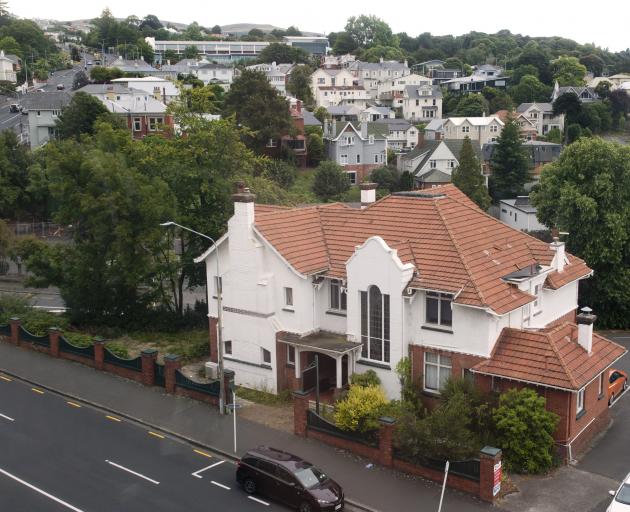
His comments come off the back of concern about the Dunedin City Council’s decision to grant developer Elim Group consent to knock down a 104-year-old Edmund Anscombe-designed house at 284 Stuart St and replace it with a multi-storey apartment complex as long as they keep the adjacent tree, which is heritage-listed.
A council spokesman confirmed the building had undergone a heritage assessment and met the criteria for protection, but the process was not complete when the resource consent application arrived.
Dr Stu Donovan, who is a senior research fellow for Motu, which specialises in urban economics, said the debate often became unnecessarily conflicted.
"We have scarcity of land. We need to acknowledge the trade-offs of preserving heritage and enabling development.
"But it’s not a zero-sum game — if we protect the right sort of heritage that could support more development."
Dunedin already had quite a lot of heritage buildings, Dr Donovan said.
The Elim Group’s application looked "pretty good" to him.
"Heritage is not a static thing; it’s being created and generated all the time.
"This is another reason why we shouldn’t be too zealous.
"Our conversations about heritage are backwards-looking. Enabling housing means more people can live in Dunedin and that could lead to new heritage down the line."
Density always required a trade-off, he said.
"If we’re going to have more affordable housing going forward, then we’re going to need more density.
"All new housing contributes to housing affordability — people moving into these developments come from somewhere.
"It creates vacancies that ripple throughout the city and benefits people.
"One of the main reasons New Zealand is in this [position is] because for the past 30 years, we haven’t been building enough new housing."
Historian Max Reeves, who specialises in Otago’s architectural history, said "preserving everything doesn’t tell the whole story".
"You can still preserve the memory of buildings in a way that doesn’t have to preserve the buildings themselves.
"It can be photography, it can be writing books about them, it can be working with museums ... this doesn’t necessarily require us to keep the buildings."
He used the example of Invercargill, where the city’s redevelopment was marked with a large didactic in the centre, which told the stories of the former buildings.
"Having a contestable fund that heritage professionals, building owners and advocacy groups can apply for to do preservation or interpretation would have more value than preserving a building that no-one can go into.
"It really is quite hard to learn about some heritage buildings ... often you have to contact the councils or Heritage NZ to get the information."
Elim Group has been approached for comment.











